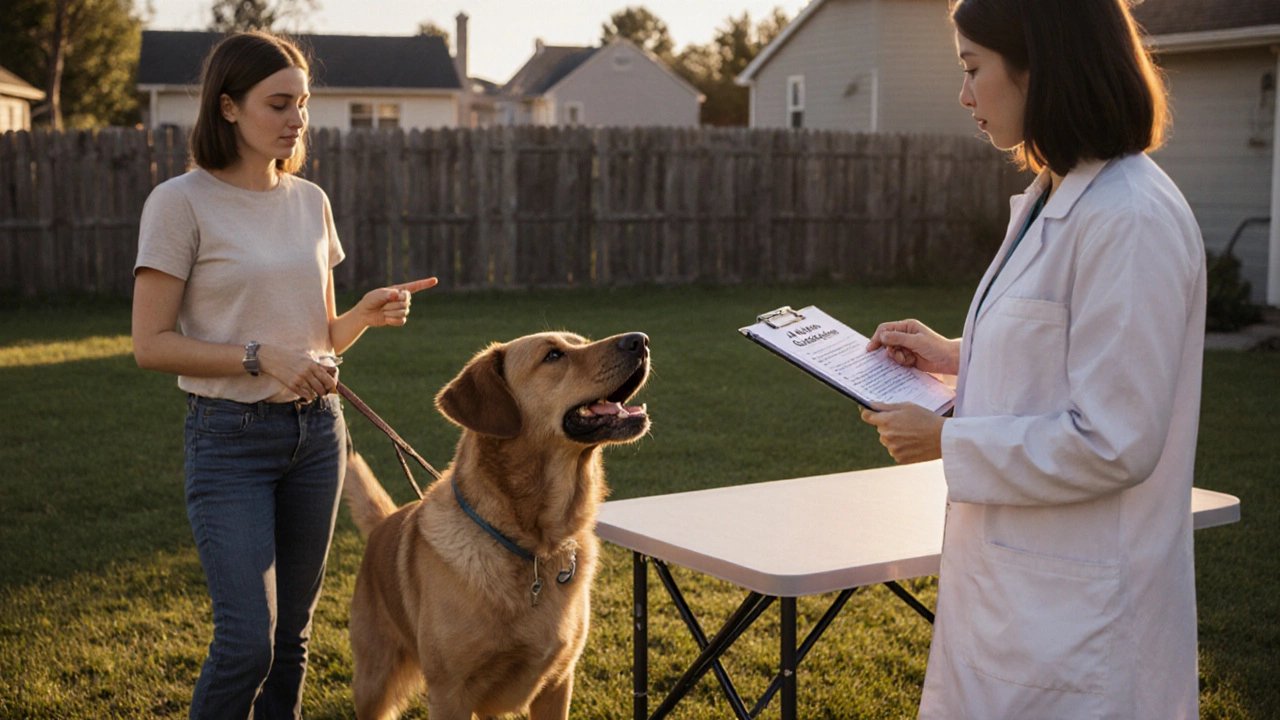Training a dog doesn’t have to be a headache. With a few clear steps you can turn a playful pup into a well‑behaved companion. This guide gives you practical advice you can try right now, whether you’re a first‑time owner or have a seasoned pooch.
Start with the three core commands: sit, stay, and come. They form the backbone of safe, everyday interaction. For sit, hold a treat just above your dog’s nose and move it back over the head. As the head follows, the rear naturally drops. The moment the hips hit the floor, say “Sit” and give the treat.
For stay, ask for a sit first, then open your palm like a stop sign and say “Stay”. Take one step back. If your dog holds the position, reward instantly. If they move, gently guide them back and repeat. Build distance slowly – a few seconds at a time.
The come command can save lives. Use a happy tone and a short leash. When you call, crouch down to their level and open your arms. As soon as they move toward you, praise loudly and give a treat. Practice in a low‑distraction area before trying the park.
One big mistake is using punishment instead of reward. Yelling or pulling on the leash creates fear, and the dog learns to avoid you rather than learn the right behavior. Stick to positive reinforcement – treats, praise, or a quick play session.
Another pitfall is inconsistency. If you let your dog jump on you one day but not the next, they get confused. Set clear rules for everyone in the house and stick to them. Consistency speeds up learning and reduces frustration.
Timing matters too. Reward the action within a couple of seconds. Delayed praise makes the dog guess which behavior earned the treat, slowing progress.
Finally, keep training sessions short. Five to ten minutes a day is more effective than a marathon session that leaves both of you exhausted. End on a positive note so your dog looks forward to the next round.
Remember, each dog is unique. Some pick up commands quickly, while others need extra patience. Adjust the reward size, the distance, and the environment to match their comfort level. If a technique isn’t clicking, switch it up – a new game or a different treat can make a big difference.
Training isn’t just about obedience; it’s about building a bond. When your dog sees you as a source of fun and safety, they’ll be eager to please. Use these basics, stay consistent, and enjoy watching your pup grow into a confident, well‑behaved member of the family.

Discover whether veterinarians back anti-bark collars, learn the pros and cons of each type, and see humane alternatives for a quieter home.

Ever wondered if vets give the green light to anti-barking devices? This article digs into what vets really think about them and if they're a good idea for your noisy pup. Discover how these gadgets work, their pros and cons, and what to watch out for. Plus, learn about alternative ways to keep your dog's barking in check. Get the lowdown on making the best choice for a happier, quieter dog!